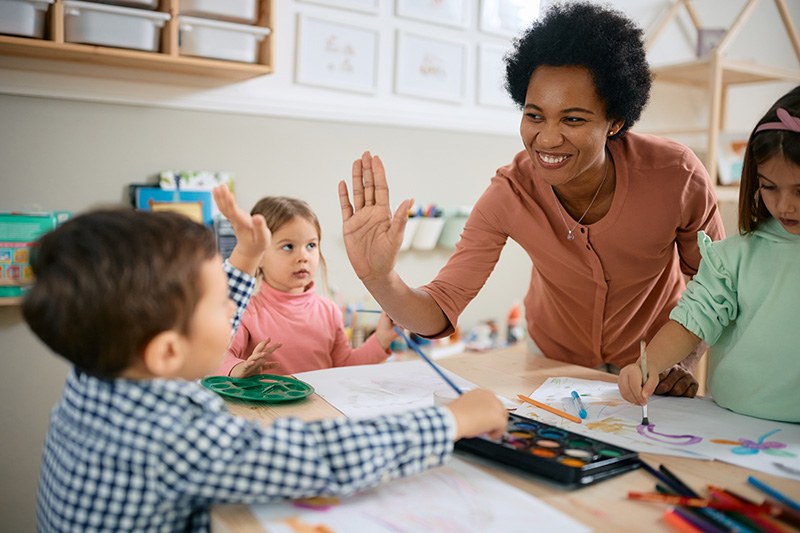Posted: April 13, 2023
"The social and emotional domains have a central position in the developmental process. Educators' culturally sensitive and responsive relationships with young children make effective, positive behavioral guidance possible" (NAEYC, 2022, p. 116).

Teacher giving a high-five during art class.
Positive guidance practices contribute to a positive classroom climate. These practices focus on supporting children's social-emotional development, and sense of security and belonging. Positive guidance strategies harness the power of culturally responsive teacher-child relationships to help children learn and succeed.
Positive guidance is grounded in adult knowledge that all children are capable of learning. Educators set high expectations for children and champion their efforts with positivity, support, and confidence in children's ability to meet these expectations. Educators notice and acknowledge children's efforts in the moment to support children's motivation and skill development.
Unlike exclusionary discipline practices, which remove children from their learning setting, positive guidance practices focus on supporting children's ability to manage their emotions and behaviors, make good choices, and be responsible and caring members of their classroom community. Educators guide children with warmth and sensitivity and provide children with consistent opportunities to succeed.
Educators who organize their classrooms with developmentally appropriate expectations of children, set consistent routines, and who encourage, teach, and model self-regulation, problem-solving, and feeling talk spend much less time managing children's challenging behavior. When educators focus on positive guidance, they respond to children instead of reacting to children's misbehaviors. They partner with families to learn about children's culture and experiences that may influence behavior and interactions in the classroom.
Teachers who use positive guidance to foster a positive classroom climate help children build competence, confidence, and essential SEL skills.
Positive guidance strategies
- provide, explain, and positively reinforce rules, routines, and smooth transitions, so children understand expectations
- acknowledge what children are doing well to support their efforts and positive behaviors
- support children's efforts to identify feelings in themselves and others, calm down, and problem-solve
- build relationships with families to support communication and to learn about and better understand a child's experiences that may impact their behavior in the classroom
Reference
National Association for the Education of Young Children (NAEYC). (2022). Developmentally Appropriate Practice in Early Childhood Programs Serving Children from Birth Through Age 8, Fourth Edition.

